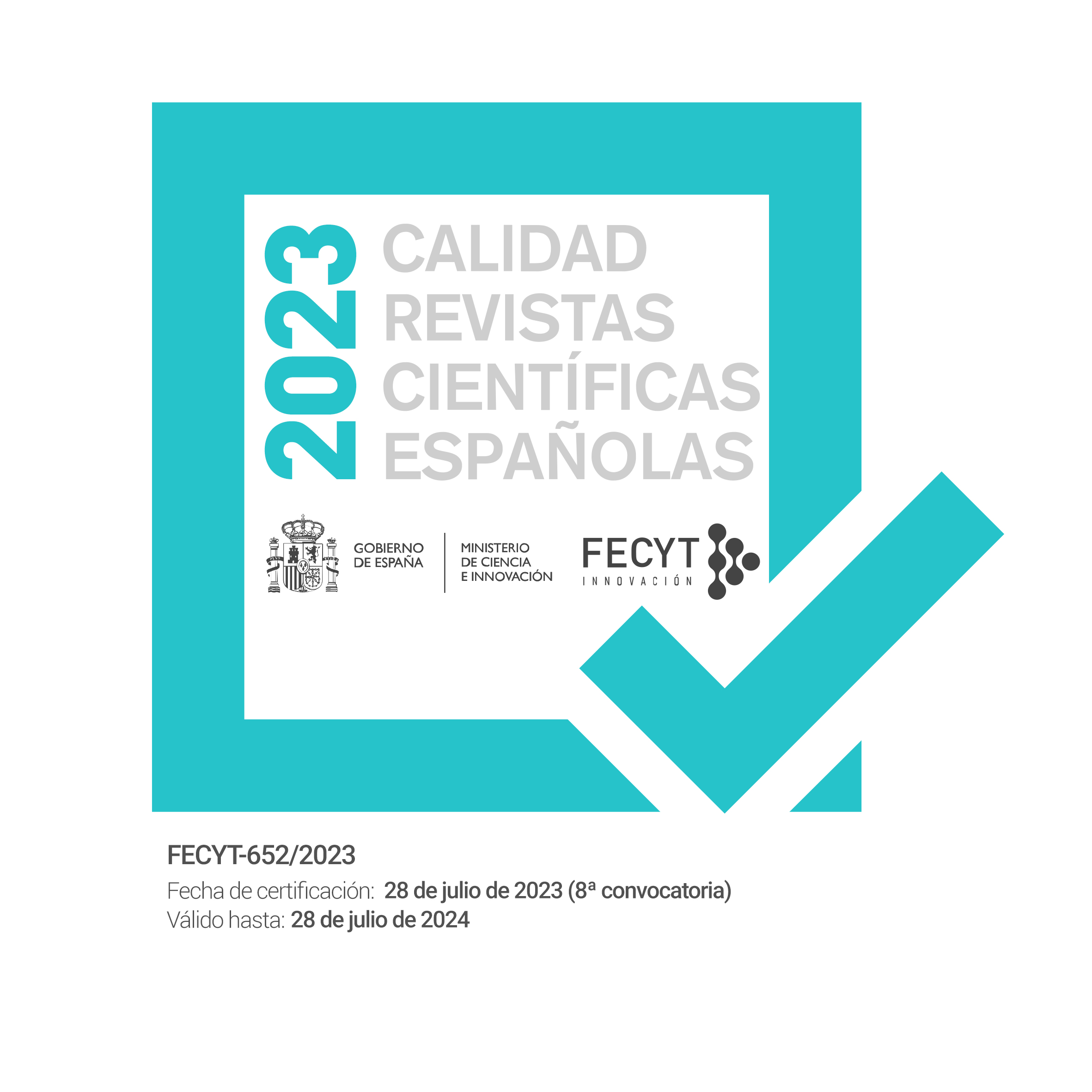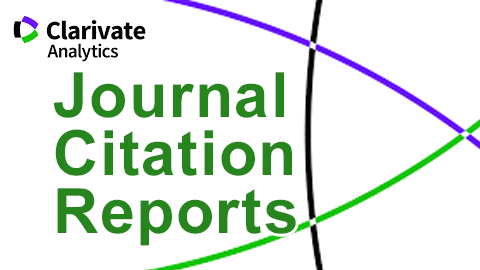Illocutionary Meaning in a Knowledge Base: The Case of Requests
Resumen
This paper focuses on conventionalized requests such as Can you X?, which are here considered to be constructions or entrenched parings of form and function. We first offer a concise account of how such illocutionary constructions have been approached from the point of view of Construction Grammar, to then provide the reader with their computational treatment within the knowledge base for Natural Language Processing systems known as FunGramKB. In so doing, four constructional domains are formalized in the COREL metalanguage. The overall aim of this paper is to contribute further evidence that the construction-based approach, which lies at the basis of the FunGramKB Grammaticon, is relevant for the investigation of language processing.Citas
Austin, J.L. (1962). How to do Things with Words. Oxford: Oxford University Press.
Baicchi, A. (2017). How to do things with metonymy in discourse. In A. Athanasiadou (Ed.), Studies in Figurative Thought and Language (pp. 75-104). Amsterdam/Philadelphia: John Benjamins.
Baicchi, A. and Ruiz de Mendoza, F. (2010). The cognitive grounding of illocutionary constructions within the theoretical perspective of the Lexical Constructional Model. Textus. English Studies in Italy, 23(3), 543-563.
Bybee, J. (2013). Usage-based theory and exemplar representation of constructions. In T. Hoffmann and G. Trousdale (Eds.), The Oxford Handbook of Construction Grammar (pp. 49-69). Oxford: Oxford University Press.
Cortés, F. J. (2019). ARTEMIS from a constructionist perspective: Reassessing constructional structures for a NLU environment. Lecture delivered at the 8th International Conference on Meaning and Knowledge Representation. Granada, Universidad de Granada, Spain. July, 1.
Coulson, S. and Lovett, C. (2010). Comprehension of non-conventional indirect requests: An event-related brain potential study. Italian Journal of Linguistics, 22(1), 107-124.
Davies, M. The Corpus of Contemporary American English (COCA). <http://www.americancorpus.org/> (September 2011-2012).
Del Campo, N. (2012). Illocutionary Constructions in English: A Study from the Perspective of the Lexical Constructional Model. PhD dissertation. Universidad de La Rioja, Spain.
Ervin-Tripp, S. M. (1976). Is Sybil there? The structure of some American English directives. Language in Society, 5, 25–66.
Fillmore, C., Kay, P. and O’Connor, M. C. (1988). Regularity and idiomaticity in grammatical constructions: The case of Let Alone. Language, 64, 501-538.
Fumero, M. C and Díaz, A. (2019). Parsing constructions in the English–based controlled natural language ASD-STE100: Formalizing constructional meaning in ARTEMIS. Paper presented at the 8th International Conference on Meaning and Knowledge Representation. Granada, Universidad de Granada, Spain. July, 1.
Gibbs, R. (1979). Contextual effects in understanding indirect requests. Discourse Processes, 2, 1–10.
Gibbs, R. (1983). Do people always process the literal meanings of indirect requests? Journal of Experimental Psychology: Learning, Memory and Cognition, 9, 524–533.
Gibbs, R. (1986). What makes some indirect speech acts conventional? Journal of Memory and Language, 25, 181-196.
Gibbs, R. (1987). Mutual knowledge and the psychology of conversational inference. Journal of Pragmatics, 11, 561-588.
Gibbs, R. (1989). Understanding and literal meaning. Cognitive Science, 13, 243–251.
Gibbs, R. (1994). The Poetics of Mind: Figurative Thought, Language, and Understanding. Cambridge: Cambridge University Press.
Gibbs, R. (2002). A new look at the literal meaning in understanding what is said and implicated. Journal of Pragmatics, 34, 457-486.
Goldberg, A. (1995). Constructions. A Construction Grammar Approach to Argument Structure Constructions. Chicago: University of Chicago Press.
Goldberg, A. (2019). Explain me this. Creativity, Competition and the Partial Productivity of Constructions. Princeton: Princeton University Press.
Gonzálvez-García, F. (2011). Metaphor and metonymy do not render coercion superfluous. Evidence from the subjective-transitive construction. Linguistics, 49(6), 1305-1358.
Holtgraves, T. (1994). Communication in context: Effects of speaker status on the comprehension of indirect requests. Journal of Experiential Psychology: Learning, Memory, and Cognition, 20(5), 1205-1218.
Holtgraves, T. (2002). Language as Social Action: Social Psychology and Language Use. Mahwah, NJ: Erlbaum.
Jiménez-Briones, R. (2016). A computational account of illocutionary meaning. Research in Corpus Linguistics, 4, 51-60.
Jiménez-Briones, R. and Luzondo, A. (2011). Building ontological meaning in a lexico-conceptual knowledge base. Onomázein, 23 (2011/1), 11-40.
Kay, P. and Fillmore, C. (1999). Grammatical constructions and linguistic generalizations: The What’s X Doing Y? construction. Language, 75(1), 1-33.
Lakoff, G. (1987). Women, Fire, and Dangerous Things. What Categories Reveal about the Mind. Chicago: Chicago University Press.
Liddy, E. D. (2003). Natural language processing. In M. A. Drake (ed.), Encyclopedia of Library and Information Sciences, 2nd edition (pp. 2126-2136). New York: Marcel Decker, Inc
Luzondo, A. and Mairal, R. (in prep.). (Indirect) requests in Natural Language Processing.
Luzondo, A. and Ruiz de Mendoza, F. (2015). Argument structure constructions in a Natural Language Processing environment. Language Sciences, 48, 70-89.
Luzondo, A. and Ruiz de Mendoza, F. (2017). Argument-structure and implicational construction in a knowledge-base. Onomázein, 35, 25-48.
Mairal, R. and Periñán, C. (2009). The anatomy of the lexicon component within the framework of a conceptual knowledge base. Revista Española de Lingüística Aplicada, 22, 217-244.
Panther, K.-U. and Thornburg, L. (1998). A cognitive approach to inferencing in conversation. Journal of Pragmatics, 30, 755-769.
Pérez, L. (2013). Illocutionary constructions: (Multiple source)-in-target metonymies, illocutionary ICMs, and specification link. Language & Communication, 33(2), 128-149.
Periñán, C and Arcas, F. (2010). The implementation of the CLS constructor in ARTEMIS. In B. Nolan and C. Periñán (Eds.), Language Processing and Grammars. The Role of Functionally Oriented Computational Models (pp. 165-196). Amsterdam/Philadelphia: John Benjamins.
Periñán, C and Mairal, R. (2010). La gramática de COREL: Un lenguaje de representación conceptual. Onomázein, 21, 11-45.
Periñán, C. (2005). Procesamiento del lenguaje natural: de lingüista a ingeniero del conocimiento. In I. K. Brady, M. Navarro Coy and C. Periñán (Eds.), Nuevas Tendencias en Lingüística Aplicada (pp. 293-317). Murcia: Quaderna.
Periñán, C. (2012). En defensa del procesamiento del lenguaje natural fundamentado en la lingüística teórica. Onomázein, 26, 13-48.
Periñán, C. (2013). Towards a model of constructional meaning for natural language understanding. In B. Nolan and E. Diedrichsen (Eds.), Linking Constructions into Functional Linguistics: The Role of Constructions in Grammar (pp. 205-230). Amsterdam/Philadelphia: John Benjamins.
Pustejovsky, J. and Batiukova, O. (2019). The Lexicon. Cambridge: Cambridge University Press.
Ruiz de Mendoza, F. (2013). Meaning construction, meaning interpretation, and formal expression in the Lexical Constructional Model. In B. Nolan and E. Diedrichsen (Eds.), Linking Constructions into Functional Linguistics: The Role of Constructions in Grammar (pp. 231-270). Amsterdam/Philadelphia: John Benjamins.
Ruiz de Mendoza, F. (2014). Low-level situational cognitive models with the Lexical Constructional Model and their computational implementation in FunGramKB. In B. Nolan and C. Periñán (Eds.), Language Processing and Grammars. The Role of Functionally Oriented Computational Models (pp. 367-390). Amsterdam/Philadelphia: John Benjamins.
Ruiz de Mendoza, F. (2015). Entrenching inferences in implicational and illocutionary constructions. Journal of Social Sciences, 11(3), 258-274.
Ruiz de Mendoza, F. and Baicchi, A. (2007). Illocutionary constructions: Cognitive motivation and linguistic realization. In I. Kecskes and L.R. Horn (Eds.), Explorations in Pragmatics: Linguistic, Cognitive, and Intercultural Aspects, (pp. 95-128). Berlin/New York: Mouton de Gruyter.
Ruiz de Mendoza, F. and Galera, A. (2014). Cognitive Modeling. A Linguistic Perspective. Amsterdam/Philadelphia: John Benjamins.
Ruiz de Mendoza, F. and Mairal, R. (2008). Levels of description and constraining factors in meaning construction: An introduction to the Lexical Constructional Model. Folia Linguistica, 42(2), 355-400.
Ruytenbeek, N. (2017). The comprehension of indirect requests: Previous work and future directions. In I. Depraetere and R. Salkie (Eds.), Semantics and Pragmatics: Drawing a Line, (pp. 293-322). Amsterdam: Springer.
Schank, R C. and Abelson, R. (1977). Scripts, Plans, Goals, and Understanding. Hillsdale, NJ: Lawrence Earlbaum.
Searle, J. R. (1969). Speech Acts: An Essay in the Philosophy of Language. Cambridge: Cambridge University Press.
Searle, J. R. (1975). Indirect speech acts. Syntax and Semantics, 3, 59–82.
Searle, J. R. (1979). Metaphor. In A. Ortony (Ed.), Metaphor and Thought, (pp. 92–123). New York: Cambridge University Press.
Stefanowitsch, A. (2003). A construction-based approach to indirect speech acts. In K.-U. Panther and L. Thornburg (Eds.), Metonymy and Pragmatic Inferencing, (pp. 105-26). Amsterdam/Philadelphia: John Benjamins.
Thornburg, L. and Panther, K.-U. (1997). Speech act metonymies. In W.-A. Liebert, G. Redeker and L. Waugh (Eds.), Discourse and Perspective in Cognitive Linguistics, (pp. 205-219). Amsterdam/Philadelphia: John Benjamins.
Trott, S. and Bergen, B. (2017). A theoretical model of indirect request comprehension. Proceedings of the AAAI Fall Symposium Series on Artificial Intelligence for Human-Robot Interaction, (pp. 129-132). Arlington, VA.
Van Valin, R. D. Jr. and LaPolla, R. (1997). Syntax, Structure, Meaning and Function. Cambridge: Cambridge University Press.
Van Valin, R. D. Jr. (2005). The Syntax-Semantics-Pragmatics Interface: An Introduction to Role and Reference Grammar. Cambridge: Cambridge University Press.
Descargas
Publicado
Número
Sección
Licencia
Reconocimiento – No comercial (CC BY-NC). Bajo esta licencia el usuario puede copiar, distribuir y exhibir públicamente la obra y puede crear obras derivadas siempre y cuando estas nuevas creaciones reconozcan la autoría de la obra original y no sean utilizadas de manera comercial.
Los autores retienen todos sus derechos de publicación y copyright sin restricciones.









